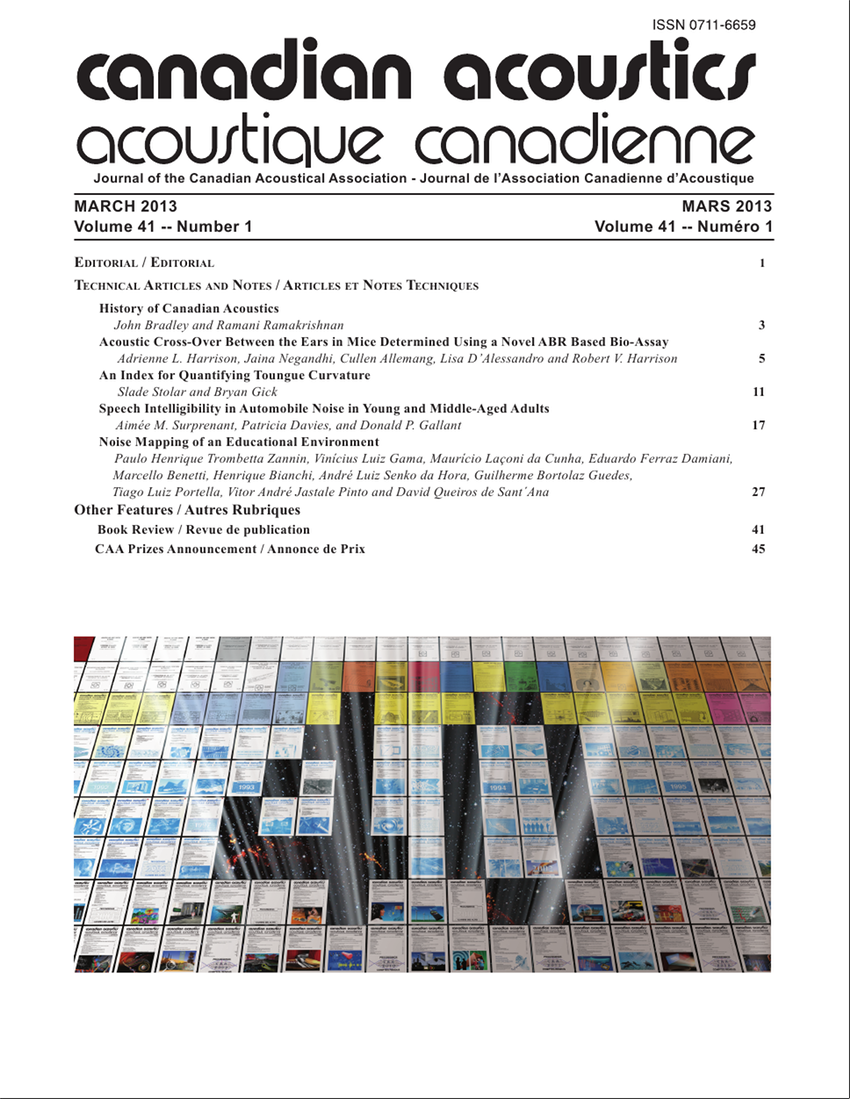Speech Intelligibility in Automobile Noise in Young and Middle-Aged Adults
Abstract
Two experiments investigated how automobile noise affects intelligibility of speech signals in both young and middle-aged individuals. In Experiment 1, the effect of automobile noise was compared to speech babble at a number of speech-to-noise ratios. In order to achieve the same intelligibility, the speech-to-noise ratio for the speech babble needed to be substantially greater than the automobile noise. In Experiment 2, middle-aged adults between the ages of 50 and 65 were given the sentences in automobile noise. Even though their hearing acuity was not severe enough to warrant a clinical diagnosis, their performance was significantly worse than the younger adults, particularly for sentences that had few contextual cues. In conclusion, although automobile noise is less damaging than speech babble at typical speech-to-noise ratios, speech understanding for individuals with even small amounts of hearing loss is significantly impacted by the noise. Automobile makers therefore should continue their efforts to reduce the noise levels in cars in order to increase speech intelligibility. [Work supported by Ford Motor Company].Additional Files
How to Cite
Issue
Section
License
Author Licensing Addendum
This Licensing Addendum ("Addendum") is entered into between the undersigned Author(s) and Canadian Acoustics journal published by the Canadian Acoustical Association (hereinafter referred to as the "Publisher"). The Author(s) and the Publisher agree as follows:
-
Retained Rights: The Author(s) retain(s) the following rights:
- The right to reproduce, distribute, and publicly display the Work on the Author's personal website or the website of the Author's institution.
- The right to use the Work in the Author's teaching activities and presentations.
- The right to include the Work in a compilation for the Author's personal use, not for sale.
-
Grant of License: The Author(s) grant(s) to the Publisher a worldwide exclusive license to publish, reproduce, distribute, and display the Work in Canadian Acoustics and any other formats and media deemed appropriate by the Publisher.
-
Attribution: The Publisher agrees to include proper attribution to the Author(s) in all publications and reproductions of the Work.
-
No Conflict: This Addendum is intended to be in harmony with, and not in conflict with, the terms and conditions of the original agreement entered into between the Author(s) and the Publisher.
-
Copyright Clause: Copyright on articles is held by the Author(s). The corresponding Author has the right to grant on behalf of all Authors and does grant on behalf of all Authors, a worldwide exclusive license to the Publisher and its licensees in perpetuity, in all forms, formats, and media (whether known now or created in the future), including but not limited to the rights to publish, reproduce, distribute, display, store, translate, create adaptations, reprints, include within collections, and create summaries, extracts, and/or abstracts of the Contribution.


